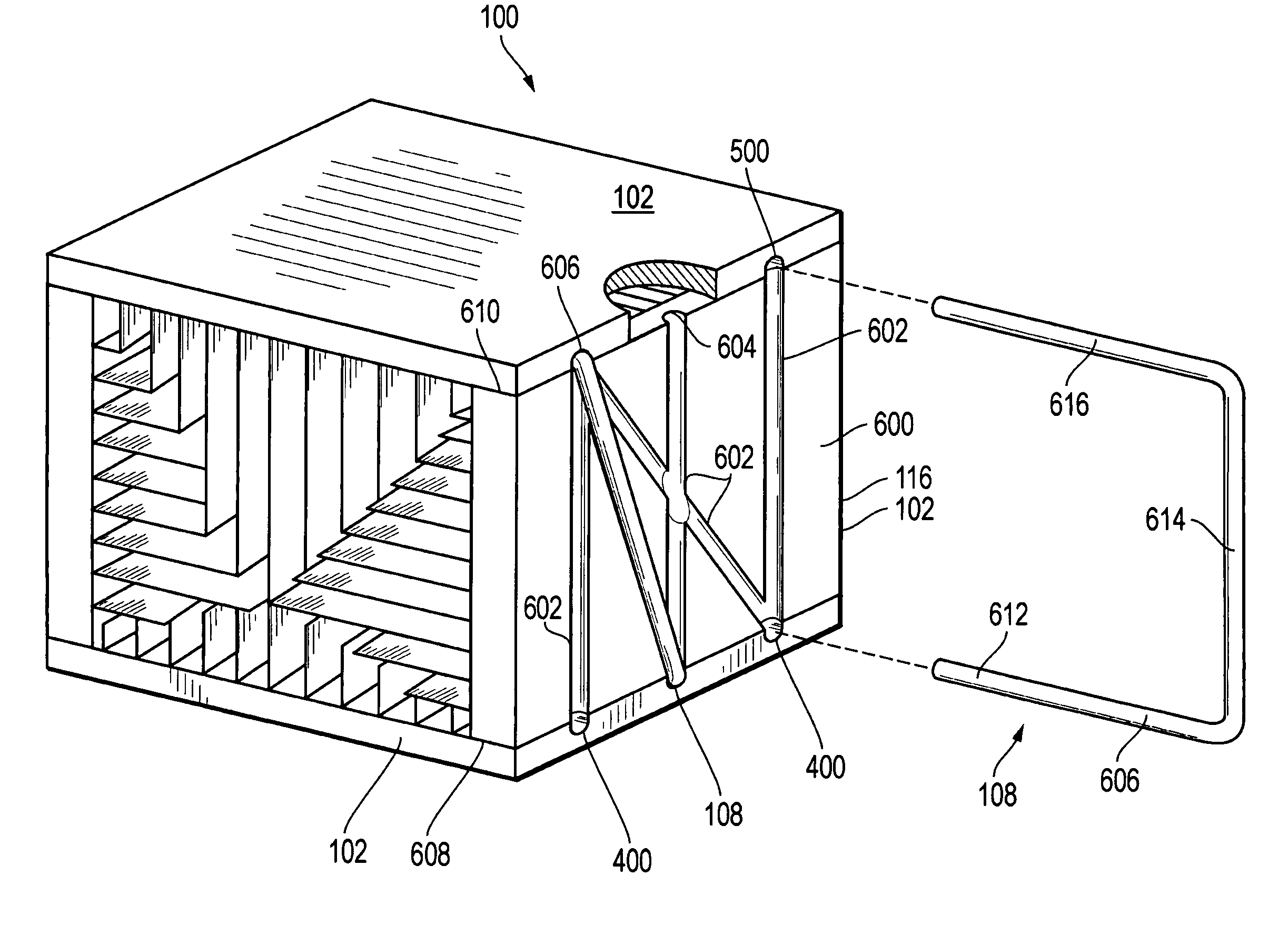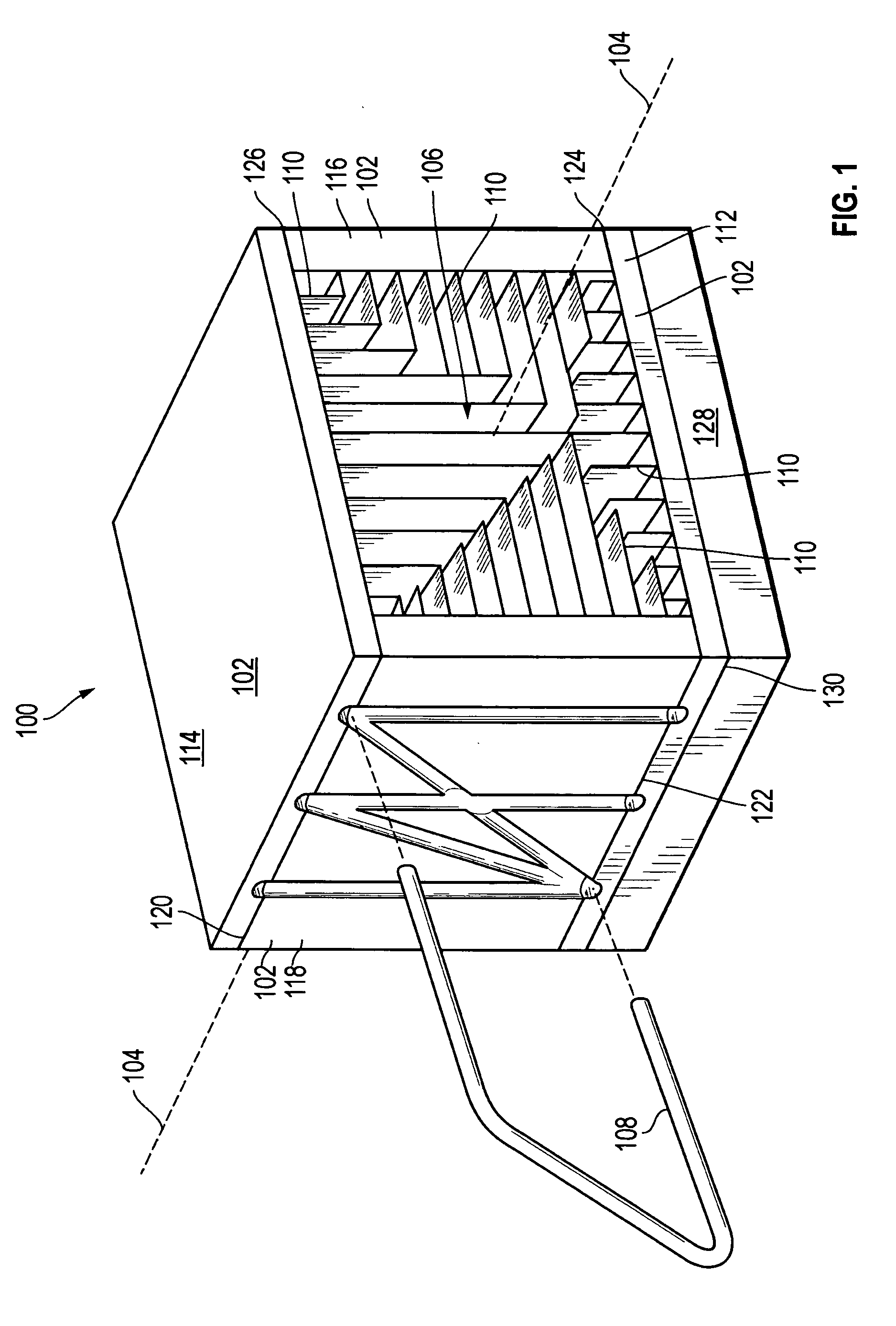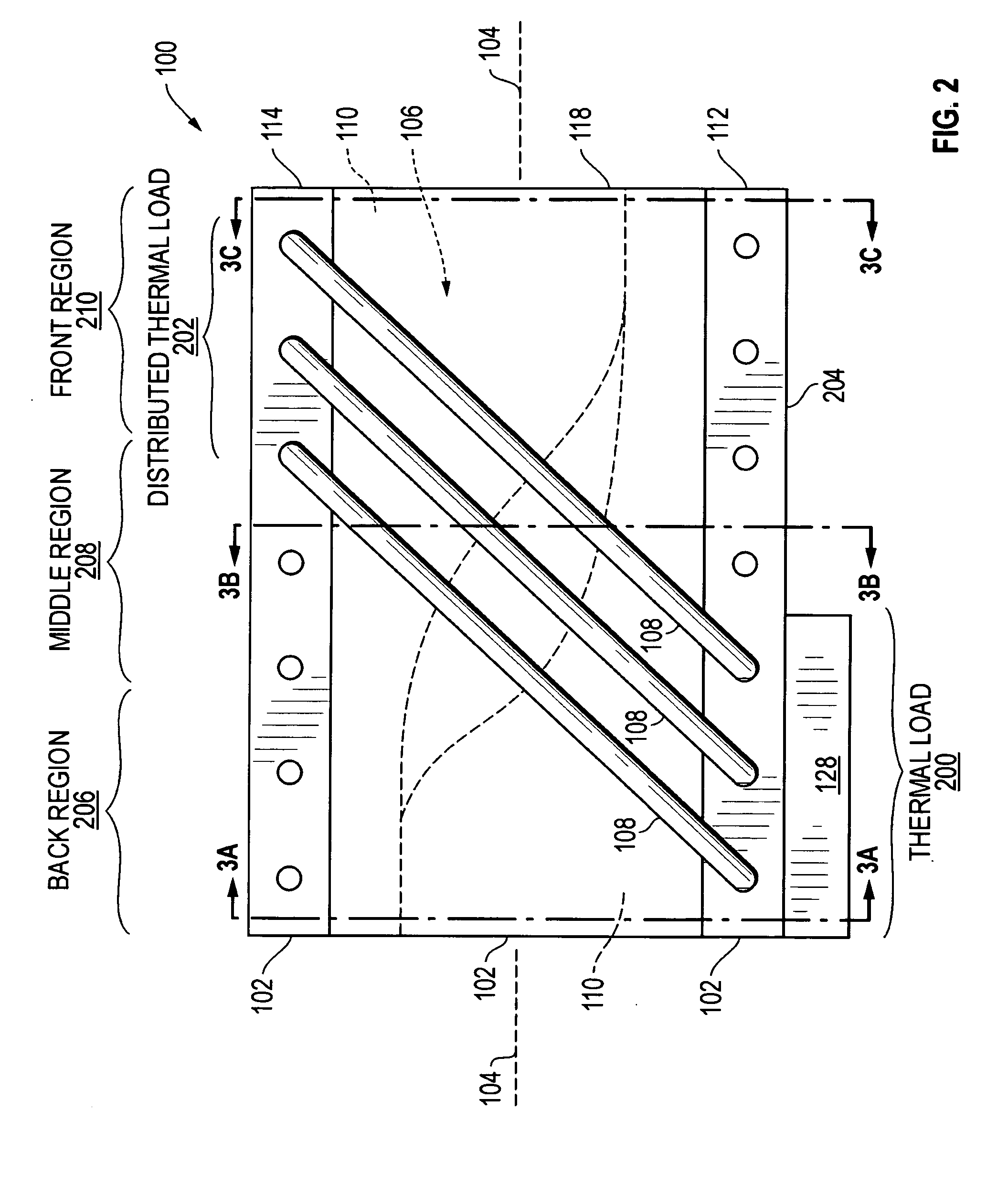Heat sink for dissipating a thermal load
a heat sink and load technology, applied in indirect heat exchangers, lighting and heating apparatuses, laminated elements, etc., can solve the problems of generating a considerable amount of heat, consuming significant amounts of power, and operating these computer processors requires a significant amount of power
- Summary
- Abstract
- Description
- Claims
- Application Information
AI Technical Summary
Benefits of technology
Problems solved by technology
Method used
Image
Examples
Embodiment Construction
[0020] Exemplary heat sinks for dissipating a thermal load according to embodiments of the present invention are described with reference to the accompanying drawings, beginning with FIG. 1. FIG. 1 sets forth a perspective view of an exemplary heat sink (100) for distributing a thermal load according to embodiments of the present invention. The thermal load is the rate of thermal energy produced over time from the operation of an integrated circuit package (128) such as, for example, a computer processor or memory chip. A measure of thermal load is typically expressed in units of Watts.
[0021] In the example of FIG. 1, the heat sink (100) is a thermal conductor configured to absorb and dissipate the thermal load from the integrated circuit package (128) thermally connected with the heat sink (100). Thermal conductors used in designing the heat sink (100) may include, for example, aluminum, copper, silver, aluminum silicon carbide, or carbon-based composites. Heat sink (100) absorbs ...
PUM
 Login to View More
Login to View More Abstract
Description
Claims
Application Information
 Login to View More
Login to View More - R&D
- Intellectual Property
- Life Sciences
- Materials
- Tech Scout
- Unparalleled Data Quality
- Higher Quality Content
- 60% Fewer Hallucinations
Browse by: Latest US Patents, China's latest patents, Technical Efficacy Thesaurus, Application Domain, Technology Topic, Popular Technical Reports.
© 2025 PatSnap. All rights reserved.Legal|Privacy policy|Modern Slavery Act Transparency Statement|Sitemap|About US| Contact US: help@patsnap.com



